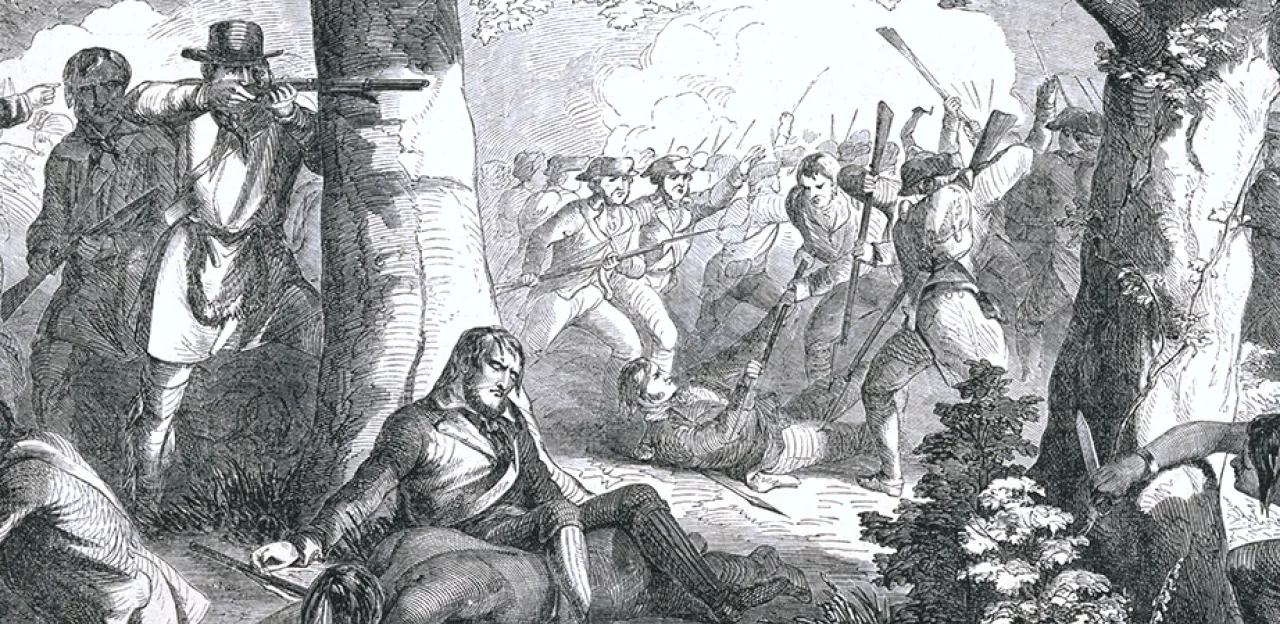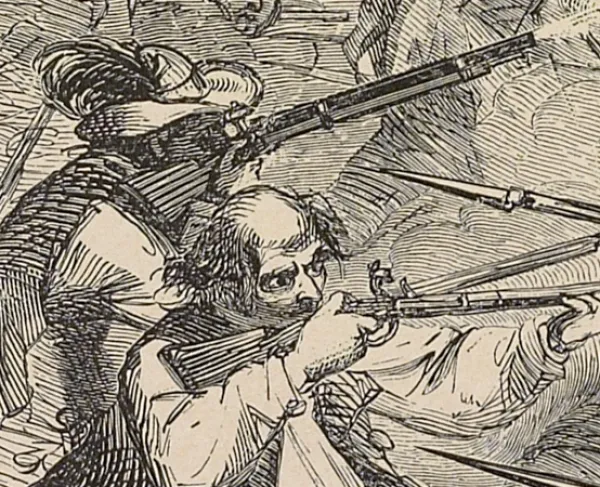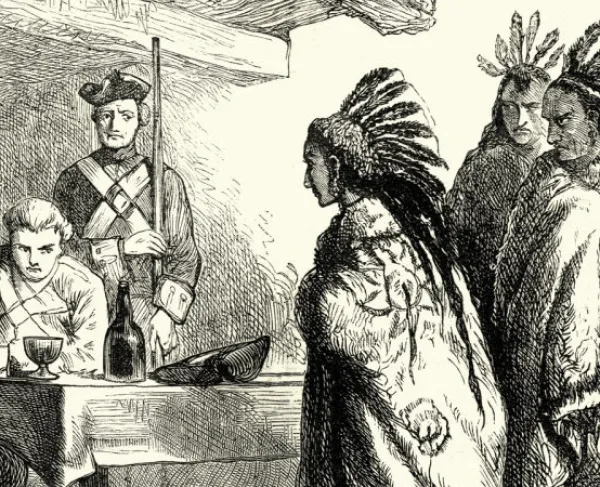Oriskany

The Battle of Oriskany was part of British operations in the Hudson Valley. The British, under the overall command of General John Burgoyne, planned to move south from Quebec and capture Fort Ticonderoga and Albany. British General William Howe was to march north from New York and rendezvous with Burgoyne at Albany, effectively severing New England from the rest of the colonies.
British Lt. Col. Barry St. Leger was ordered to support this campaign by attacking Fort Stanwix in the Mohawk Valley, laying siege on August 2, 1777. American militia under General Nicholas Herkimer marched to Stanwix in an effort to relieve the siege. Herkimer had almost 800 militiamen and 60 Oneidas as scouts. Hearing of Herkimer’s column, St. Ledger dispatched Sir John Johnson and about 100 Loyalist light infantry, supplemented by about 400 Mohawks. This was to be one of the few battles of the Revolution where only North Americans participated.
By August 6, Herkimer’s men were within a day’s march of the fort. He had hoped to send word to the American defenders and coordinate an attack, but the couriers were delayed. Instead, compelled by his subordinates, Herkimer decided to press on to the fort. Johnson planned to ambush the Americans six miles from the fort, in the dense undergrowth of a ravine, where the trail crossed a small stream. He and his native allies designed the perfect ambush, with the Loyalists blocking the trail, and natives poised along either side.
At 10 am, the American column moved into the ravine, with Herkimer mounted near the front. Johnson wanted the Americans to run headlong into his Loyalists, and then have the Natives swoop in to decimate the column trapped in the ravine. Instead, some of the natives at the rear of the American column opened fire preemptively. As a result, the portion of Herkimer’s men who were outside the ambush zone quickly fled, pursued by Mohawks for miles. Herkimer himself was struck in the leg. His men laid him against a tree, but when they suggest he retire to the rear he replied, “I will face the enemy” and calmly sat directing the battle.
When the smoke cleared after the initial attack, Herkimer had lost roughly half his men killed, wounded, or routed. A thunderstorm halted the fighting for nearly an hour, allowing Herkimer to gather his shattered command. Herkimer ordered his men to fight in relays, with one loading while the other fired, greatly decreasing the American’s vulnerability to the melee armed Natives.
By 11 am, Herkimer’s messengers had reached the fort, and the requested sortie was finally organized. When the thunderstorm passed, American Lt. Col. Marinus Willett led 250 men out, and proceeded to raid the unoccupied British camp. A nearby scout informed Johnson’s forces. When his native allies realized their camps were being raided, they immediately disengaged to protect their families and possessions. With the loss of his Native allies, Johnson was also forced to disengage.
Herkimer and his men withdrew to Fort Dayton, where Herkimer’s shattered leg was amputated. He died of his wounds on August 16. American losses were 385 killed, and another 80 wounded and captured. The British lost 7 killed and 21 wounded, while their Native allies took 65 casualties. An American relief column lifted the siege of Fort Stanwix on August 21. Ultimately, British forces in the Mohawk valley had achieved little.





